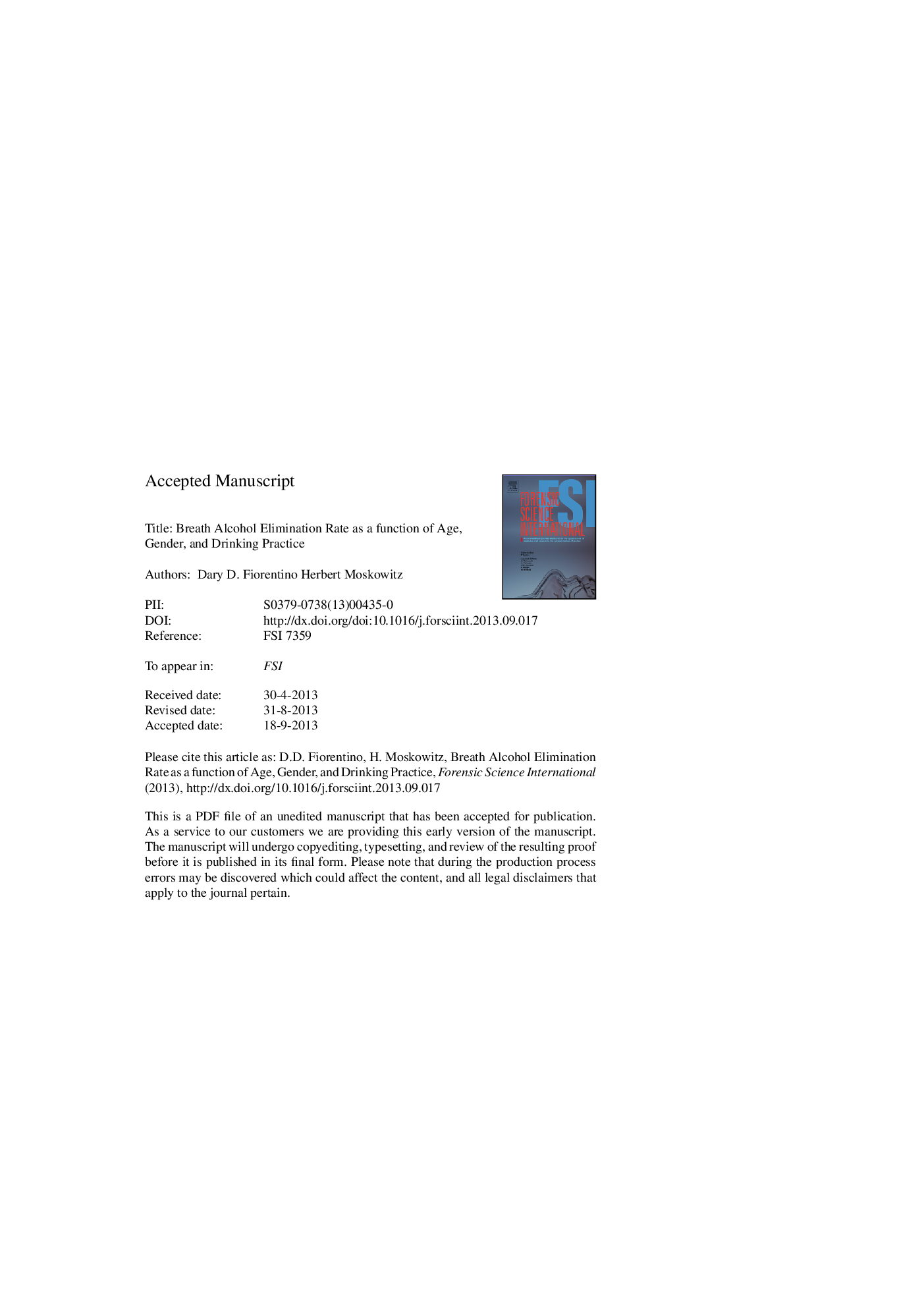| Article ID | Journal | Published Year | Pages | File Type |
|---|---|---|---|---|
| 6552770 | Forensic Science International | 2013 | 26 Pages |
Abstract
The objective of this study was to determine whether breath alcohol elimination rate varies as a function of age, gender, and drinking practice, factorially combined. Eighty-four men and 84 women drank enough alcohol to produce peak BrACs of .110 g/210 L for heavy and moderate drinkers and BrACs of .090 g/210 L for light drinkers. An Intoxilyzer 5000 was used to generate the concentration-time profiles. Mean (M) elimination rates (g/210 L/h) were found to be higher for women (N = 84, M = .0182, SD = .0033) than for men (N = 84, M = .0149, SD = .0029), F(1, 144) = 57.292, p < .001; higher for heavy drinkers (N = 56, M = .0176, SD = .0038) than for light and moderate drinkers combined (N = 112, M = .0160, SD = .0032), F(1, 144) = 12.434, p < .01; and higher for older subjects (51-69 years, N = 42, M = .0180, SD = .0038) than younger subjects (19-50 years, N = 126, M = .0161, SD = .0033), F(1, 144) = 14.324, p < .001. None of the two-way interactions (age Ã gender, age Ã drinking practice, gender Ã drinking practice) or the three-way interaction (age Ã gender Ã drinking practice) was statistically significant. Limitations of the current study and suggestions for further research are discussed.
Related Topics
Physical Sciences and Engineering
Chemistry
Analytical Chemistry
Authors
Dary D. Fiorentino, Herbert Moskowitz,
